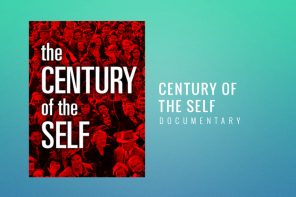
Monday July 19, 2021
Brand Strategy: Why branding matters
6-min read
If you ask marketing agency professionals about their biggest challenge, the one answer you are likely to get is: How to convince clients and prospects that branding is important.
Most business owners and entrepreneurs will have a view of what branding is. But press them and many will struggle to give you a precise definition. That’s because it’s widely regarded as marketing jargon, right up there with ‘brand value’ and ‘brand positioning’ – labels that marketing professionals use but not everyone outside the industry understands.
Naturally, any self-respecting business executive will want to understand in tangible terms what a service is and what it will do for them before going with it. So with branding we really need to cut through some of the vagueness and set out concretely what it is and what it helps you to achieve in practice, namely quality media coverage, bigger social media audiences and, ultimately, more sales.
The bottom line is that you cannot afford to ignore branding because if you do there is a risk that your PR campaigns and content may fall short of objectives and expectations or, worse, send out damaging contradictory messages. When executed properly, branding is very effective. In a 2015 global Nielsen survey, 21% of shoppers said they bought a product because they liked the brand.
Elements of branding
The brand is your company’s identity. It consists of the following elements:
-
Positioning
Brand positioning is a unique position a brand holds in the minds of its customers, in relation to its competitors. In order to identify your positioning, you need to do market and customer research to understand your customers’ aspirations, dreams, pain points as well as gaps in the market. Being able to differentiate your brand allows you to then grow and scale your business, without needing to compete only on price.
An example of strong positioning comes from Dove. They found that most women have low self-esteem because of how the beauty industry obsesses over their imperfections. So they positioned themselves as clearly distinct from every other beauty brand out there, by encouraging women to be confident in their own skin.
Such distinctive brand positioning then allows you to talk about issues from a particular perspective or have a particular expertise. This allows you to develop certain types of stories for your target media, who in turn will take what you say seriously because of your brand positioning. Essentially, If you have a unique selling proposition, your company becomes more attractive to both your customers and the media.
-
Purpose
A business’s reason for being: why it does, makes or provides things. A 2018 research by Accenture shows that consumers these days purchase from companies whose purposes align with their beliefs. Dove’s purpose is to make a positive experience of beauty accessible to every woman.
Purposes, again, allow you to comment on broader issues relevant to your target audience rather than issues that just pertain to your industry. It also makes your brand more interesting to people and journalists outside your industry.
-
Mission
Beyond economics, your business should have an overarching objective. For example, Tesla’s mission is to accelerate the world’s transition to sustainable energy. This mission enables the company to stand out from other tech or automotive companies. It may influence and inspire your existing customers and also help you acquire new ones. In resonating with wider audiences, the mission will also attract the attention of the media. If you are strongly associated with a trend or debate, whether it is ESG or climate change, journalists and editors will turn to you for comment.
-
Values
This identifies the specific, distinctive and fundamental behavioural values that distinguish your business from others. It determines everything from how you work in the company, how you make decisions and the systems and processes in place. Consumers like certain brands not just because they have a preference for what they offer but because they feel good about the way they are run and the way they treat their staff. If you have particular innovative and progressive workplace policies then you will also attract the interest of journalists and broadcasters developing stories around employment practices, for example.
-
Brand archetype
This identifies the preferred style and manner of the business. There are 12 brand archetypes, from innocent, hero, creator, sage, etc. This helps you decide how you want your purchasing audience to view you, and will help to determine what you communicate to the press and how you communicate it.

-
Tone of voice
How the brand character comes through in words. This is a kind of extension of the brand archetype. That is to say, once you have worked out how you want to be viewed by customers and media, you need to establish how you want to talk to them. So in practical terms, do you want to strike an informal tone or sound assertive or authoritative or something in between? The Tone of Voice of Monzo bank defines itself as follows: make the technical stuff as clear as you can, be positive, be transparent and be inclusive. It helps ensure that everyone in a company communicates in the same way, from the PR professional to the CEO.
-
Logo and colour palette
They determine your company’s visual aesthetic and need to be cohesive and work in tandem with the rest of its content and brand character. The logo and colour palette are the most prominent expression of your company and should resonate with your audiences to help your marketing and communications become instantly recognisable. A press release with a distinctive, familiar logo landing on a journalist’s desk may get more attention than a release with an underwhelming, anonymous one.

-
Brand messaging

A brand message (tagline/strapline) that is memorable, meaningful and concise, while capturing the essence of your brand. It usually contains the key messages you want to convey about your company. Having the key messages front of mind helps present a cohesive, consistent image across all platforms and channels – and avoids confusing, contradictory messaging. So, for instance, if you are a marketing agency and one of your key values and messages is that you are strategic, you might find the meme below about content marketing amusing but you would not post it on your site.
The proof is in the pudding
Some successful campaigns where branding and campaigns were aligned to generate great results:
-
Barbie gets her geek on (2010)
With Barbie’s purpose being “to inspire the limitless potential in every girl”, the public were invited to choose her 126th career, and “over a million people voted for Computer Engineer Barbie in a campaign mixing the public’s love for Barbie with the movement to empower girls,” reported PRWeek [paywall]. The result was covered on Today, CNN, The New York Times, The Wall Street Journal and Redbook. It also won the PRWeek 2011 Campaign of the Year and Product Brand Development Campaign of the Year awards. The campaign generated a 144% sales increase.
“The conversation was extremely positive and underscored the brand’s purpose… to show girls they can be anything,” said the company.
-
Dove campaign for real beauty (2004 – present)
Dove’s mission is to make women feel beautiful. Dove’s campaign for real beauty in the ten years following its launch in 2004 increased annual sales from $2.5 billion to over $4 billion. It started a “conversation aimed at widening society’s definition of beauty and invited all women to realize their potential for beauty,” said VP and GM at Dove.
When you look at compelling brands around you, the one thing in common is that they all have clear and strong branding.
Curzon PR is a London-based PR firm working with clients globally. If you have any questions, please feel free to contact our Business Development Team bd@curzonpr.com





Follow us